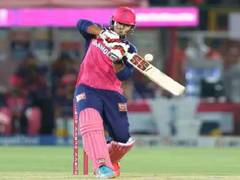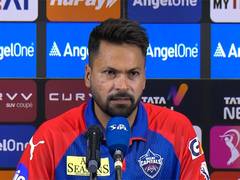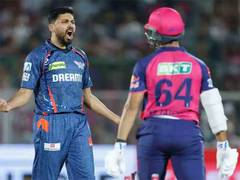On this day in 2002, India captured Natwest Series by defeating England at Lord’s
New Delhi [India], July 13 (ANI): On this day in 2002, the Indian cricket team registered one of its most iconic wins overseas when they defeated a strong England side in their home territory to win the Natwest Tri-Series, which also featured Sri Lanka.
India reached the final after topping the points table with 19 points, having won four matches, losing one and one game failed to produce a result. England were at the second spot with three wins, two losses and no result. They had a total of 15 points. India had beaten England once and Sri Lanka thrice, while England had beaten SL twice and India once. Sri Lanka were underwhelming, having won one match and lost five.
The final took place at Lord’s, the most iconic venue in the United Kingdom for cricket. A formidable English line-up featuring Marcus Trescothick, Nick Knight, skipper Naseer Hussain, Michael Vaughan, Andre Flintoff, Darren Gough met India’s young, energetic team featuring Virender Sehwag, Yuvraj Singh, Harbhajan Singh, Zaheer Khan, supported by veteran stars like Sachin Tendulkar, skipper Sourav Ganguly, Rahul Dravid and Anil Kumble.
After electing to bat first, England put on 325/5 in their 50 overs. Skipper Naseer scored 115 in 128 balls, with 10 fours. He had a 185-run stand with Marcus Trescothick for the second wicket. The left-handed Trescothick also scored a brutal 109 in just 100 balls, with seven fours and two sixes. All-rounder Andrew Flintoff played a supporting knock of 40 in 32 balls.
The Indian bowling line-up was taken to cleaners. England’s mean, ferocious batters left no corner of the Lord’s untouched. Zaheer Khan (3/62) was the pick of the bowlers for India, but he received his share of beating as well. Ashish Nehra (1/66) and Anil Kumble (1/54) also took wickets.
India needed 326 runs to win the final. But the possibility of an Indian win looked doubtful as during this period, India had often made a mess out of big run chases. Youngsters in the team also did not have plenty of big-match experience to settle the nerves and chase smoothly.
Openers Sehwag (45 in 49 balls with seven fours) and Ganguly (60 in 43 balls, with 10 fours and a six) nonetheless, gave India the start they wanted, scoring 106 in just 15 overs. After dismissals of both openers, India lost direction with some quick wickets. Ronnie Irani and Ashley Giles had struck, getting big wickets of Sachin (14) and Dravid (5).
With India at 146/5 in 24 overs, without much experience and recognised batters left in the line-up, youngsters Yuvraj and Mohammed Kaif played with responsibility and helped India cross 250 runs. They stitched a sixth-wicket stand of 121 runs, which Collingwood ended by dismissing Yuvraj for 69 (63 balls), which consisted of nine fours and a six.
Kaif kept fighting with the tailenders. He stitched a valuable 47-run stand with Harbhajan Singh, who scored 15 runs worth its weight in gold. Kaif and Zaheer (4) helped India seal a two-wicket win with three balls to go. Kaif was India’s hero, scoring 87 in just 75 balls with six fours and two sixes.
Irani, Giles and Flintoff took two wickets each but India pulled off a heist, highlighting their fighting spirit and attacking game.
The most iconic image connected to this match came after the win, with Sourav Ganguly taking off his shirt on the Lord’s balcony and waving it with expressions of anger and joy on his face. He had avenged a similar act done by Flintoff at Wankhede’s Stadium in 2002, India’s most iconic venue and in a way, the centre of Indian cricket. Ganguly’s act signified the coming of a fearless new India, who would not take any challenge lying down. The team beat a top-class side at their own home.
This is considered as one of India’s best overseas wins because not only it helped India win the tri-series title, but the match winners of the future like Yuvraj, Sehwag, Harbhajan and Zaheer gained plenty of experience that would help India win the inaugural T20 World Cup (2007), ICC Cricket World Cup (2011) in the next ten years or so.






